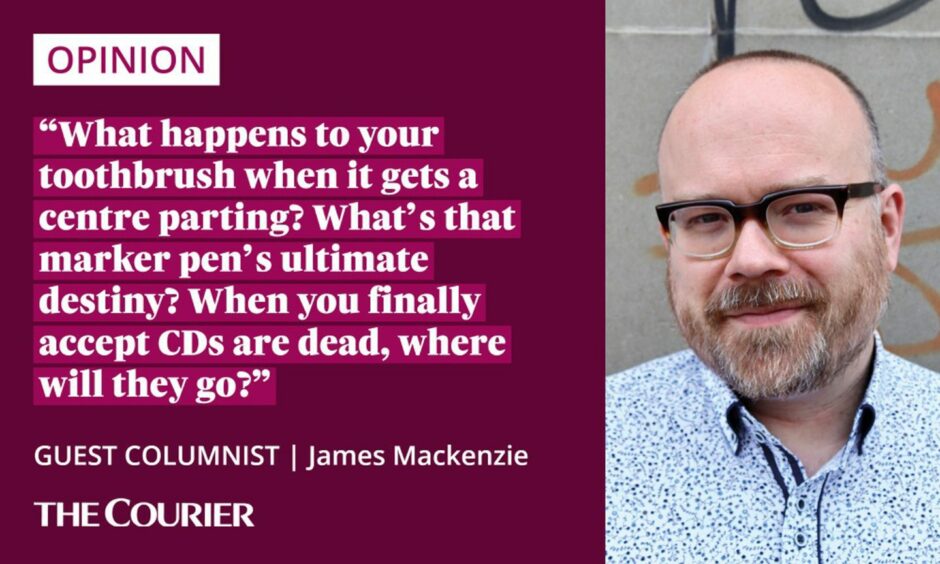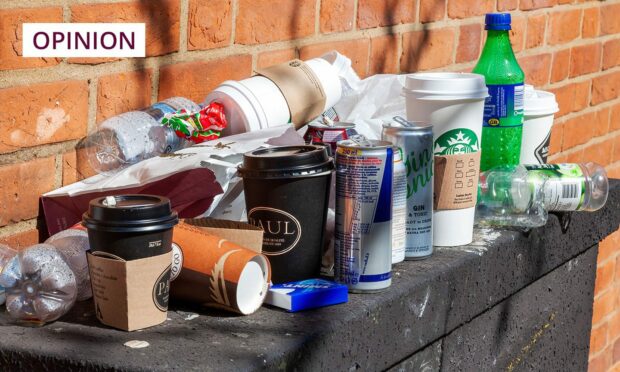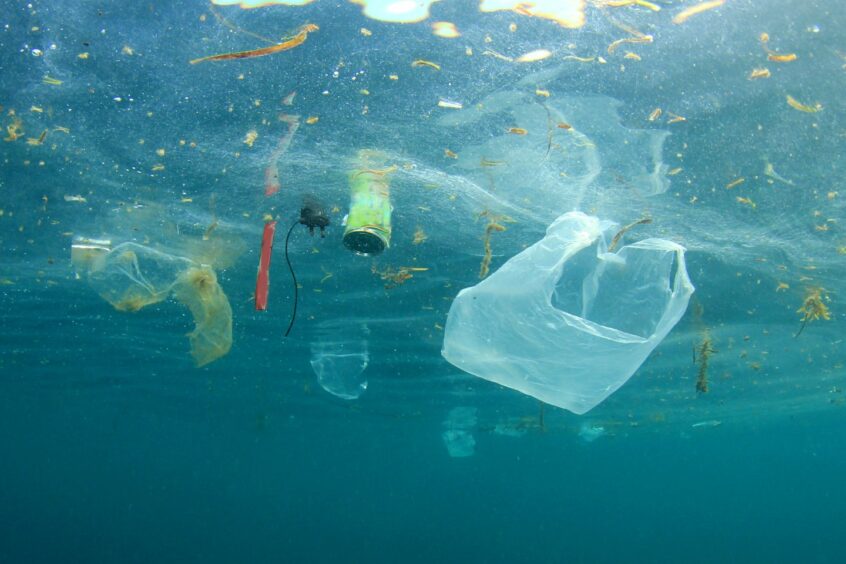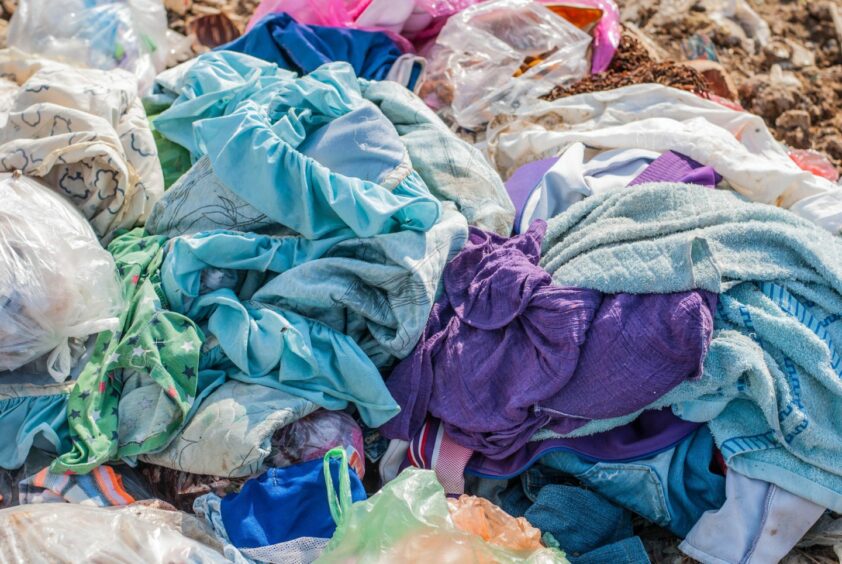When we talk about waste and recycling, packaging comes to mind first.
It’s understandable: it’s not the product you wanted, just how it gets to you.
And it’s so often obviously unnecessary.
The tiny data card arrives in a vast cardboard box, surrounded by bubble wrap. The wee cakes, wrapped individually in plastic, sit in a hard plastic tray, all wrapped in a third layer of plastic, with a cardboard box around it.
Some of this is improving. Without endorsing the big online retailers’ other practices, they now tend to ship in appropriate cardboard-only packaging that can be recycled anywhere.

But the crisp packet and the coleslaw tub will keep being buried. Or they will get burnt (aka “landfill in the sky”).
New incinerators are to be banned, but the existing ones will operate for decades more.
Packaging is just the tip of the landfill iceberg, though. What happens to your toothbrush when it gets a centre parting? What’s that marker pen’s ultimate destiny? When you finally accept CDs are dead, where will they go?
These things cannot be recycled now, no matter how keen you are.
The Scottish Government has launched a consultation on a circular economy bill
So most products are just landfill in waiting. Our economy follows a linear structure, an almost uninterrupted line running from production to landfill.
Companies continue to shirk responsibility for the end-of-life costs of their products and packaging. Those costs instead fall on us, on the environment, and on local government waste and cleansing services.
The linear economy wastes valuable resources, and gives incentives to manufacturers to work out the cheapest way to make their products our problem – while aggravating climate change.
With this in mind, the Scottish Government has just launched a consultation on a circular economy bill and also on a route map intended to meet 2025 waste and recycling targets.
The bill of the same name proposed before the last election was one of the weakest and most unambitious pieces of legislation Scotland has ever seen.
It included charges for coffee cups, which had already been agreed with the Green MSPs – but it could have kick-started the kind of reusable drinks cup system starting to be used in Germany.
There were tepid proposals to ban the disposal of unsold clothing, and make businesses report on unsold stock.
The carrier bag charge has been 5p since 2014, and so it went up to 10p, just as other countries were starting to ban plastic bags outright.
And there was one total distraction: tougher fines on those who litter from a vehicle.
Fines do not build circularity
Flipping back to the new proposals, the rhetoric remains excellent.
And the context has become trickier for Scottish Ministers: the 2020 UK Internal Market Act may act as a limit on what can be banned in Scotland alone.
But these proposals are still essentially tinkering, alongside some of the civil service’s trademark substitutes for action.
As with the Good Food Nation Bill, another contender for the Most Feckless Legislative Proposal Ever, ministers would be required to produce a strategy. Why not just produce the strategy anyway?
It has targets, another classic diversion tactic.
They rarely deliver: the only exception that comes to mind is the early devolved administrations’ renewables targets. Mostly targets get missed.
Or, on climate change emissions, they measure the wrong thing. And then get missed anyway.
using “emissions” rather than footprint has two effects – it blames more recently industrialised nations (notably China) for the carbon costs of producing for Western markets, and then it makes further Western offshoring of manufacturing seem desirable “for the climate”. https://t.co/cFxTfJdXqc
— James Mackenzie (@mrjamesmack) November 4, 2021
The ban on destruction of unsold goods is back: which is fine, but will not change what those goods are made of, or how they get recovered.
Charges for single use items appear again, alongside waste reporting, and again fines on litterbugs. Fines do not build circularity, and instead blame the public for a problem the producers cause.
At best a tiny amount of waste might shift from litter to landfill.
What’s proposed isn’t even a baby step towards a circular model
So, starting from scratch, what should be done?
Ministers need to look at what products can be sold in the first place, what materials they use, and how they’re packaged. If they continue to let “anti-circular” products pour onto the market, everything else is inevitably window-dressing.
Scotland already has surprisingly wide-ranging powers here.
The bans on plastic-stemmed cotton buds and microbeads in cosmetics used a piece of legislation from 1990 which gives the power to “to prohibit or restrict” the use of “injurious substances or articles”.
We now know much more about what is environmentally “injurious”, so those powers could and should be used far more widely.
Anything which cannot be reused or recycled should be banned or phased out, except essential items with no current alternative. Even there ministers could give incentives for alternatives and help drive innovation.
Producers should then be required to accept their products and packaging back, and show it’s all being reused or recycled. This needn’t happen overnight: businesses will need time to adjust and prepare.
The UK Internal Market Act complicated things, but Scottish ministers can always set out what they intend to do, and if it creeps beyond the devolved powers, they can always ask Westminster for permission.
What’s proposed isn’t even a baby step towards a circular model. It’s a flurry of distractions and the odd half-hearted attempt to pick up some of the pieces of detritus from the linear economy.
Ministers won’t get another shot at circularity for a decade or more. So make the case. Set out what you really want to achieve. Be ambitious.
James Mackenzie is a freelance media and public affairs consultant and former head of communications for the Scottish Greens.













Conversation